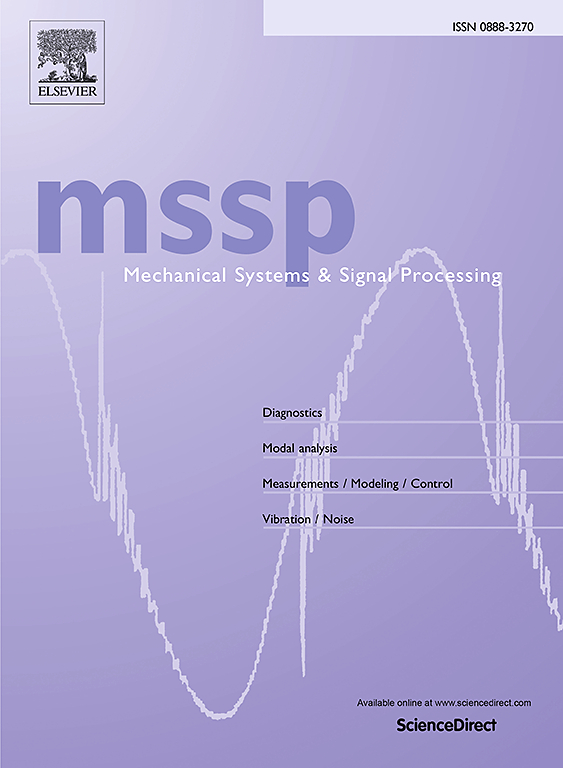Improved variational generalized nonlinear mode decomposition for separating crossed chirp modes and dispersive modes of non-stationary signals in mechanical systems
IF 7.9
1区 工程技术
Q1 ENGINEERING, MECHANICAL
引用次数: 0
Abstract
Recently, an adaptive divide-and-conquer method called variational generalized nonlinear mode decomposition (VGNMD) has been proposed to simultaneously extract chirp modes and dispersive modes from non-stationary signals. However, similar to numerous signal analysis techniques, the VGNMD is unsuitable for analyzing complicated non-stationary signals with crossed modes in mechanical systems because it is based on the assumption that signal modes are strictly separated in the time–frequency (TF) plane. In this paper, an improved VGNMD (I-VGNMD) method is proposed to address this issue. Firstly, considering the advantages of mathematical morphology in image feature extraction, the I-VGNMD introduces a TF-skeleton extraction technique to obtain complete TF skeletons containing crossing features from the TF distribution of the signal. Next, according to the pixel connectivity, a weighted directional skeleton tracking strategy is developed to adaptively select the skeleton tracking path and correctly separate the crossed TF skeletons. Finally, the separated independent skeletons are used as initial instantaneous frequencies or group delays to drive the divide-and-conquer decomposition framework of VGNMD for accurate mode reconstruction. Simulated examples and real-life applications to railway wheel/rail fault diagnosis and rotating target detection are considered to demonstrate the effectiveness of the proposed method.
求助全文
约1分钟内获得全文
求助全文
来源期刊

Mechanical Systems and Signal Processing
工程技术-工程:机械
CiteScore
14.80
自引率
13.10%
发文量
1183
审稿时长
5.4 months
期刊介绍:
Journal Name: Mechanical Systems and Signal Processing (MSSP)
Interdisciplinary Focus:
Mechanical, Aerospace, and Civil Engineering
Purpose:Reporting scientific advancements of the highest quality
Arising from new techniques in sensing, instrumentation, signal processing, modelling, and control of dynamic systems
 求助内容:
求助内容: 应助结果提醒方式:
应助结果提醒方式:


